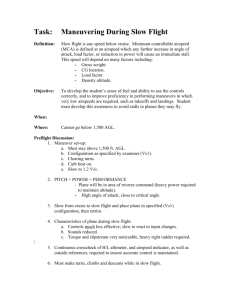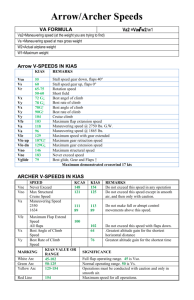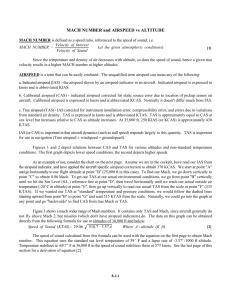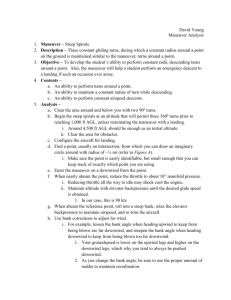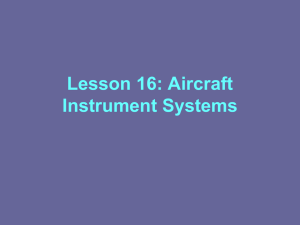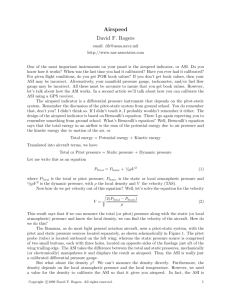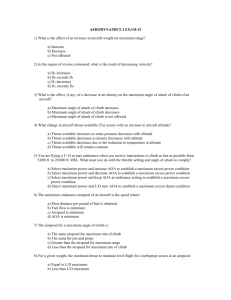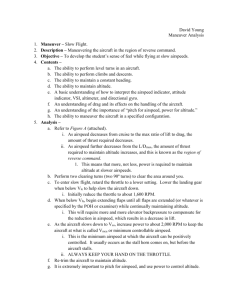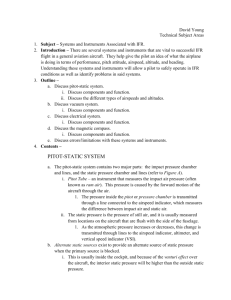Airspeed Definitions
advertisement
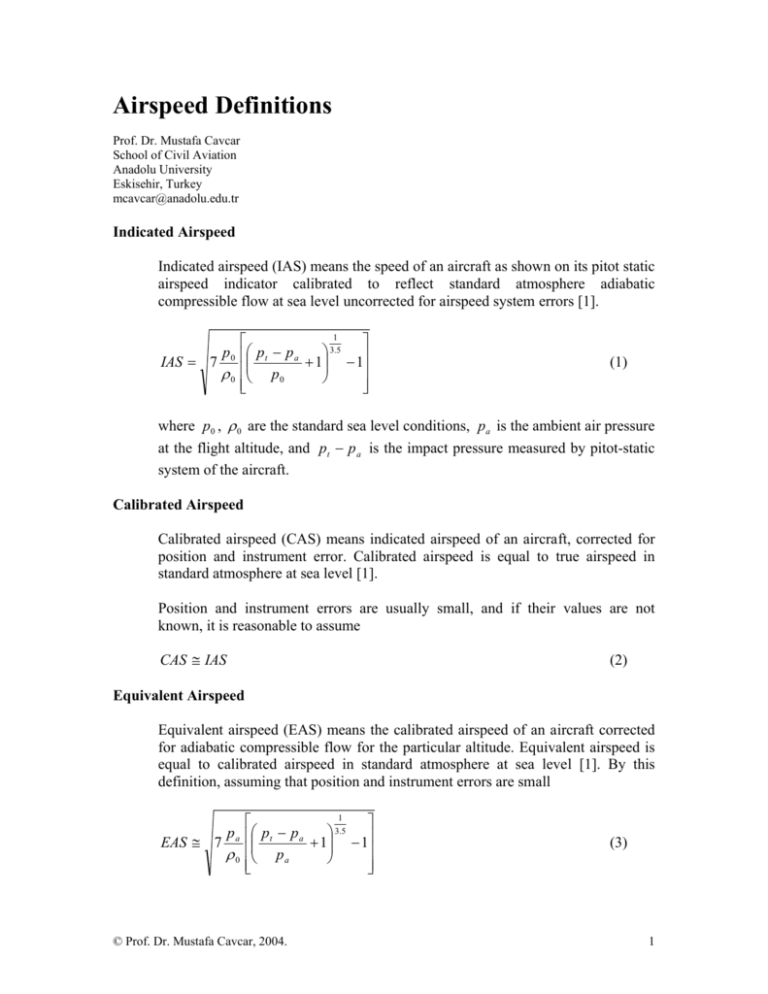
Airspeed Definitions Prof. Dr. Mustafa Cavcar School of Civil Aviation Anadolu University Eskisehir, Turkey mcavcar@anadolu.edu.tr Indicated Airspeed Indicated airspeed (IAS) means the speed of an aircraft as shown on its pitot static airspeed indicator calibrated to reflect standard atmosphere adiabatic compressible flow at sea level uncorrected for airspeed system errors [1]. 1 3 .5 p 0 pt − p a IAS = 7 + 1 − 1 ρ 0 p 0 (1) where p0 , ρ 0 are the standard sea level conditions, pa is the ambient air pressure at the flight altitude, and pt − p a is the impact pressure measured by pitot-static system of the aircraft. Calibrated Airspeed Calibrated airspeed (CAS) means indicated airspeed of an aircraft, corrected for position and instrument error. Calibrated airspeed is equal to true airspeed in standard atmosphere at sea level [1]. Position and instrument errors are usually small, and if their values are not known, it is reasonable to assume CAS ≅ IAS (2) Equivalent Airspeed Equivalent airspeed (EAS) means the calibrated airspeed of an aircraft corrected for adiabatic compressible flow for the particular altitude. Equivalent airspeed is equal to calibrated airspeed in standard atmosphere at sea level [1]. By this definition, assuming that position and instrument errors are small 1 3.5 p a pt − p a EAS ≅ 7 + 1 − 1 ρ 0 p a © Prof. Dr. Mustafa Cavcar, 2004. (3) 1 True Airspeed True airspeed (TAS) means the airspeed of an aircraft relative to undisturbed air. True airspeed is equal to equivalent airspeed multiplied by ρ 0 ρ [1]. Therefore, TAS = EAS ρ 0 EAS = ρ σ (4) where σ = ρ ρ 0 is the relative air density which is the ratio of the air density at the pressure altitude to the standard sea level air density. Mach Number Mach number means the ratio of true air speed to the speed of sound [1] at the flight altitude. M = TAS cS (5) where cS is the speed of sound at the flight altitude. Example For a standard day, assuming that there are no position and instrument errors. h [ft] 0 10000 20000 25000 30000 IAS [kts] 280 280 280 280 280 CAS [kts] EAS [kts] TAS [kts] 280 280 280 280 277 323 280 273 375 280 271 405 280 268 437 M 0.42 0.51 0.61 0.67 0.74 This example shows that TAS and Mach number increases by altitude although IAS is constant for all altitudes. This situation implies that the air traffic controller must be careful when two aircraft are descending towards same fix from two different altitudes but reporting same indicated airspeeds. Reference [1] Joint Aviation Authorities (JAA), Definitions and Abbreviations, JAR-1, Hoofddorp, 1999. © Prof. Dr. Mustafa Cavcar, 2004. 2


